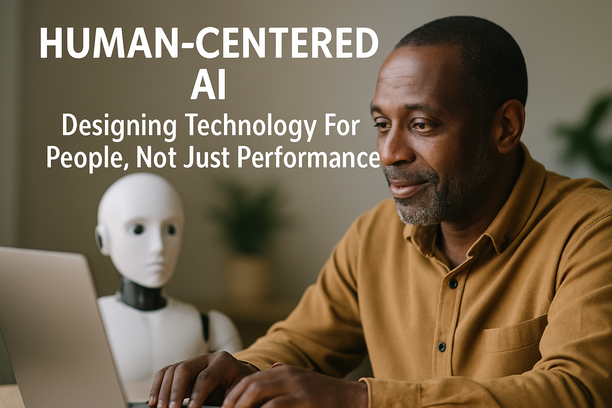Understanding Role-Based Access Control (RBAC) in AI
Role-Based Access Control (RBAC) is a foundational method used to regulate who can access specific data or AI functionalities within a system, especially crucial when handling sensitive data. Essentially, RBAC assigns permissions to users based on their roles within an organisation, ensuring only authorised personnel interact with particular information or AI features. This approach significantly reduces the risks of data misuse or breaches.
The importance of RBAC in AI is underscored by the nature of AI applications, which often manage sensitive information like personal details, financial records, and health data. Without stringent access controls, unauthorised individuals could access this data, potentially causing harm either intentionally or inadvertently. RBAC acts as a gatekeeper, granting access exclusively to those whose roles require it, such as doctors accessing patient records or analysts managing data models.
For instance, within an AI-powered healthcare system, a nurse may be permitted to view basic patient information, but only a doctor can access comprehensive medical histories or treatment plans. RBAC ensures these access boundaries are well-defined and enforced, fostering privacy and trust.
Effective RBAC implementation involves carefully defining roles in line with organisational needs, precisely assigning permissions, and regularly reviewing user access. Automated governance tools can assist in promptly updating access rights in response to personnel or role changes.
Organisations committed to responsible AI practices recognise the necessity of robust access control systems. Expert teams knowledgeable in AI technology and security governance can tailor RBAC frameworks to the unique requirements of AI applications, ensuring sensitive data protection while enabling efficient AI usage by authorised users.
By designing RBAC thoughtfully and maintaining continuous oversight, organisations build AI systems that are safer, more reliable, and compliant with privacy laws. This not only safeguards data but also promotes ethical and responsible AI utilisation.
For deeper insights into safeguarding sensitive data and ensuring responsible AI, exploring expert guidance and frameworks is invaluable to establishing and maintaining secure RBAC systems in evolving AI environments. Source: FHTS – How We Keep Sensitive Data Safe
Why AI Needs Limits: The Risks of Unrestricted Access
Allowing AI systems unrestricted access to data exposes several critical privacy and security vulnerabilities, highlighting the need for clear access boundaries.
Firstly, unrestricted access can lead to AI inadvertently collecting and processing unnecessary sensitive information, including personal details, financial data, or health records. Exposure or misuse of such data can result in identity theft, financial fraud, or breaches of confidentiality. For example, an AI analyzing customer data for marketing purposes might also access private conversations or transactions if access is not tightly controlled. This overreach compromises privacy and damages trust in AI technology. Source: FHTS – Why Privacy in AI is Like Locking Your Diary
Secondly, unrestricted access amplifies risks of data leaks and cyberattacks. As AI systems often handle massive data volumes, they become attractive targets for hackers. Without robust access controls and encryption measures, attackers could exploit weaknesses to extract or manipulate data, inflicting financial losses and tarnishing reputations.
Bias and fairness concerns also arise when AI freely accesses all data, including biased or inaccurate information, potentially perpetuating discrimination or unfair outcomes. Establishing clear, curated data boundaries is essential for developing safe and ethical AI systems .Source: FHTS – Why Bias in AI Is Like Unfair Homework Grading
Furthermore, transparent and auditable data access boundaries help uphold accountability. Knowing which data AI accesses and how it is used enables organisations to monitor AI behaviour closely, detect errors, and respond to issues swiftly. This transparency fosters confidence among users and stakeholders.
Implementing these boundaries demands expertise in AI safety, data governance, and secure system design. Experienced teams like those at FHTS integrate strict data access protocols with ongoing oversight, ensuring AI systems operate within ethical and legal frameworks, particularly in sensitive sectors like healthcare and finance. Source: FHTS – How We Keep Sensitive Data Safe
In summary, unrestricted AI data access risks significant privacy breaches, security incidents, bias, and lost trust. Clear, enforceable data boundaries are vital to responsibly manage these risks. Collaborating with experts specialising in safe AI solutions can profoundly enhance data safeguarding and trust maintenance.
Implementing RBAC to Safeguard Sensitive Information
Protecting sensitive data from unauthorised access is critical, especially when AI systems process that data. Role-Based Access Control (RBAC) is an effective method to secure data integrity and limit AI and user access only to necessary information based on roles.
Here are practical strategies for applying RBAC effectively:
- Define Clear Roles and Responsibilities: Outline all roles interacting with AI systems, detailing their responsibilities and corresponding access needs. For example, data scientists may access raw datasets, while marketing staff view only aggregated insights, minimising unnecessary exposure.
- Principle of Least Privilege: Grant the minimum access rights required for roles to perform their tasks. This limits risk if an account or AI component is compromised.
- Segment Data According to Sensitivity: Classify data into public, internal, confidential, or highly sensitive categories, then align RBAC permissions accordingly to restrict sensitive data to authorised roles only.
- Regularly Review and Update Access Rights: Since roles and requirements evolve, conduct periodic audits to confirm access appropriateness and revoke unnecessary permissions. Automated oversight tools assist in this process.
- Combine RBAC with Strong Authentication: Employ multi-factor authentication to verify user identities before role assumption, reducing unauthorised access risks.
- Monitor Access and Maintain Logs: Log all access to sensitive data by AI and users, enabling continuous monitoring to detect and respond to unusual activities indicating potential breaches.
Integrating RBAC into AI environments ensures a disciplined and controlled data access approach. Given AI’s ability to process vast sensitive data, RBAC supports trustworthiness by safeguarding data integrity and privacy.
Organisations aiming to embed RBAC should collaborate with experts experienced in secure AI frameworks. Such specialists tailor RBAC to unique data workflows and compliance demands, balancing security with operational efficiency, thereby enabling AI advantages without compromising data safety.
Explore further resources focused on safe AI principles to understand how customised RBAC implementations enhance data protection across industries. Source: FHTS – How We Keep Sensitive Data Safe: Strategies and Best Practices
Real-World Examples: How RBAC Prevents AI Overreach
RBAC has demonstrated strong effectiveness in managing AI implementations by ensuring AI operations align strictly with user roles, preventing data misuse and enhancing security. Several practical cases highlight RBAC’s role as an effective safeguard against unauthorised AI usage.
One example involves AI deployment in public safety, such as the AI-supported travel app in London. RBAC restricted sensitive AI functionalities and data to specific roles—public safety officials only—thereby protecting personal information and maintaining public trust through controlled AI decision-making. Source: FHTS Public Safety Travel App Case
In marketing, RBAC confines data access and AI actions to departmental roles. For example, a marketing team empowered by AI used RBAC to access relevant AI insights safely, while role definitions prevented misuse of customer data and ensured privacy compliance. Source: FHTS Marketing AI Empowerment
Healthcare AI systems benefit greatly from RBAC by strictly limiting access to sensitive patient data and AI tools based on medical staff roles. This reduces data breach risks and unethical AI use, ensuring AI supports diagnoses and treatments without unnecessary exposure of patient records .Source: FHTS Healthcare AI Safety
These RBAC implementations succeed on the principle of assigning AI permissions tailored to clearly defined roles matching legitimate user needs, minimising attack surfaces and keeping AI-driven decisions within verified limits. This foundation fosters safer, more responsible AI environments.
Successful RBAC deployment requires partnerships with experts who understand AI safety and practical access control. Specialists design customised RBAC models adapted to operational contexts, integrating RBAC within Safe AI strategies to keep AI activities controlled, transparent, and impactful.
Learning from these proven cases empowers organisations to confidently apply RBAC to restrict AI capabilities and guard against data misuse, establishing a foundation for trust and responsible innovation.
The Future of AI Privacy: Evolving Role-Based Access Strategies
The evolution of RBAC in AI privacy is marked by innovations aimed at securing data practices more efficiently. A prominent trend is dynamic, risk-adaptive RBAC systems that adjust permissions in real-time based on contextual factors such as user behaviour, location, and device security. This flexibility enables legitimate users while blocking suspicious access attempts triggered by anomalies.
Integration of AI-driven behavioural analytics into RBAC marks another advance, continuously monitoring user interactions to detect anomalies and proactively adapt access controls. This AI-RBAC fusion enhances security and automates compliance with privacy regulations, reducing human errors.
The emergence of zero-trust architectures complements these advances by enforcing strict identity verification and least-privilege policies consistently. RBAC systems evolve to be more granular and context-sensitive, often reevaluating permissions to uphold robust privacy protections.
Blockchain technology is also gaining momentum for decentralised identity management within RBAC frameworks, providing tamper-proof audit trails, improved transparency, and enhanced user control over personal data—key to privacy in AI systems.
Despite these exciting developments, challenges remain. Balancing adaptive RBAC’s flexibility with strong security, maintaining transparency in access decisions, preventing inadvertent data exposure, and preserving utility without hindering AI effectiveness require careful design.
Best practices to navigate this landscape include continuous monitoring of access, human oversight to detect subtle risks, and adherence to ethical frameworks aligned with safe AI principles, ensuring access control stays robust, fair, and clear.
Leading organisations like FHTS exemplify thoughtful approaches by implementing advanced, adaptive RBAC solutions grounded in responsible AI practices. Their expert teams help organisations prepare for future challenges while safeguarding data privacy, achieving secure and trustworthy AI deployments that satisfy technical and ethical standards.
For more insights on how integrated safe AI frameworks operate and how to secure AI systems effectively going forward, FHTS offers comprehensive resources on building AI with trust and responsibility.Learn more about safe AI frameworks here
Sources
- FHTS – How FHTS Empowered a Marketing Team to Use AI Safely
- FHTS – How We Keep Sensitive Data Safe
- FHTS – Why Bias in AI Is Like Unfair Homework Grading
- FHTS – Why Privacy in AI is Like Locking Your Diary
- FHTS – Safe AI is Transforming Healthcare
- FHTS – Strategic Move to an AI-Supported Application for Public Safety Travel App in London
- FHTS – The Safe and Smart Framework: Building AI with Trust and Responsibility


